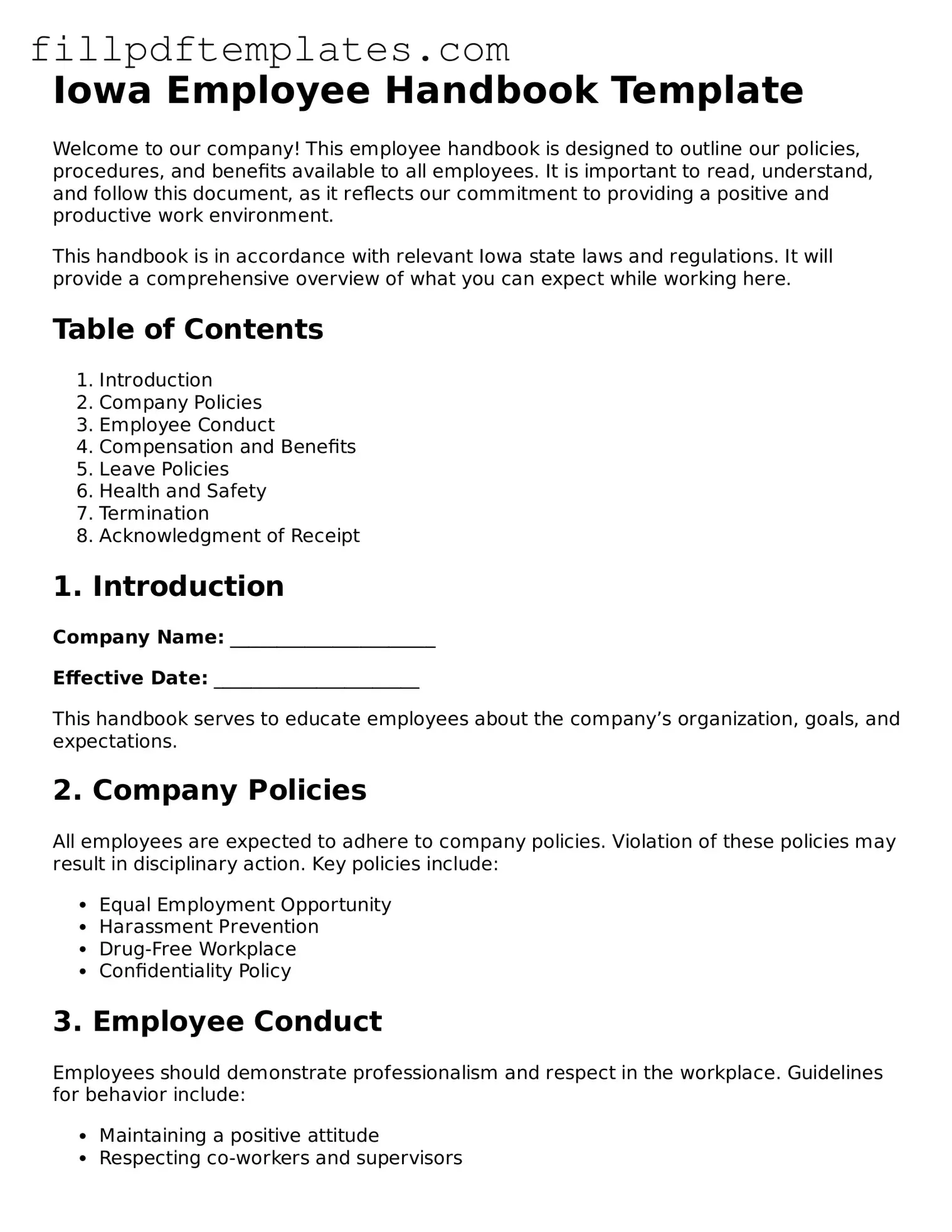Iowa Employee Handbook Template
Welcome to our company! This employee handbook is designed to outline our policies, procedures, and benefits available to all employees. It is important to read, understand, and follow this document, as it reflects our commitment to providing a positive and productive work environment.
This handbook is in accordance with relevant Iowa state laws and regulations. It will provide a comprehensive overview of what you can expect while working here.
Table of Contents
- Introduction
- Company Policies
- Employee Conduct
- Compensation and Benefits
- Leave Policies
- Health and Safety
- Termination
- Acknowledgment of Receipt
1. Introduction
Company Name: ______________________
Effective Date: ______________________
This handbook serves to educate employees about the company’s organization, goals, and expectations.
2. Company Policies
All employees are expected to adhere to company policies. Violation of these policies may result in disciplinary action. Key policies include:
- Equal Employment Opportunity
- Harassment Prevention
- Drug-Free Workplace
- Confidentiality Policy
3. Employee Conduct
Employees should demonstrate professionalism and respect in the workplace. Guidelines for behavior include:
- Maintaining a positive attitude
- Respecting co-workers and supervisors
- Adhering to dress code
4. Compensation and Benefits
We value our employees and offer competitive compensation. Our benefits package includes:
- Health insurance options
- Retirement plans
- Paid time off
5. Leave Policies
Eligible employees are entitled to various leave options, including:
- Sick leave
- Family leave
- FMLA leave
6. Health and Safety
Your safety is our top priority. Employees must adhere to health and safety protocols, including:
- Reporting accidents or hazards immediately
- Following emergency procedures
7. Termination
This section outlines the procedures for termination of employment, whether initiated by the company or the employee. Important points include:
- Notice period requirements
- Exit interviews
8. Acknowledgment of Receipt
I acknowledge that I have received, read, and understood the policies contained in this Employee Handbook.
Employee Name: ______________________
Employee Signature: ______________________
Date: ______________________
Thank you for being a valued member of our team!
